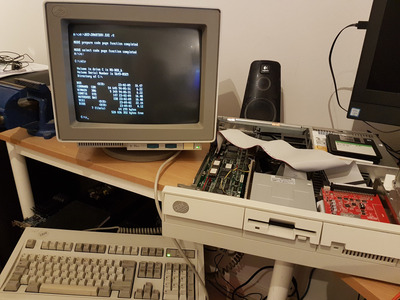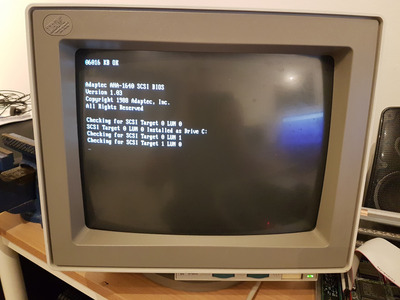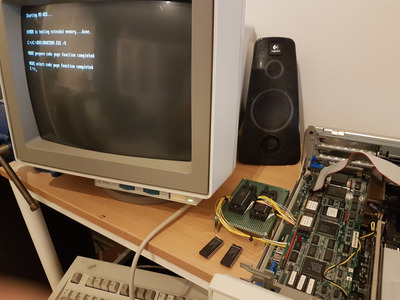First post, by johand84
I've decided to relive the nightmares of my childhood in the 90s by recreating the computer that I was stuck with at the time: The IBM PS/2 model 55SX. A very boring and impossible to improve computer then, but "only" a challenge now. I've gotten quite far, having acquired the computer, the IBM 8515 monitor, and the IBM model M keyboard. My plan is to pimp the shit out of it by installing the things that I could only dream about as a child: External CD-ROM, Ethernet, and a Sound Blaster compatible sound card.
The first challenge was to get the computer to boot into MS-DOS from a floppy. No big deal, I just had to McGuyver a standard floppy drive (the original drive is dead, I suspect the caps), hack the power supply (to get molex floppy connectors), fix the Dallas 1287, and create a reference disk from an image that I downloaded online. No problem, and I consider this the "hello world"-moment of this project.
Now, there are two problems with the hard drive: The first is that I do not like mechanical hard drives, and the second is that the original ESDI hard drive is missing. The goal is to have the computer boot from something else than a floppy, and my attempted solution was to install the Adaptec AHA-1640 SCSI controller and the ZuluSCSI hard drive emulator. The installation went fine, and the virtual hard drive (512MB) shows up when the AHA-1640 BIOS is executed. When booting from a floppy, I can also access the virtual hard drive as C: in MS-DOS.
However, I cannot get the computer to boot from the virtual hard drive, no matter how much I try to low level format it (using SCSIFMT.EXE), running fdisk, running format, running sys, etc. The only thing I can think of is to update the BIOS on both the computer and the AHA-1640, and if that doesn't help, disassemble the BIOS(es) and patch them myself.
A lot of background, but now to my question: Has anyone managed to boot an IBM PS/2 using the AHA-1640? If so, are there any particular steps that must be taken?


